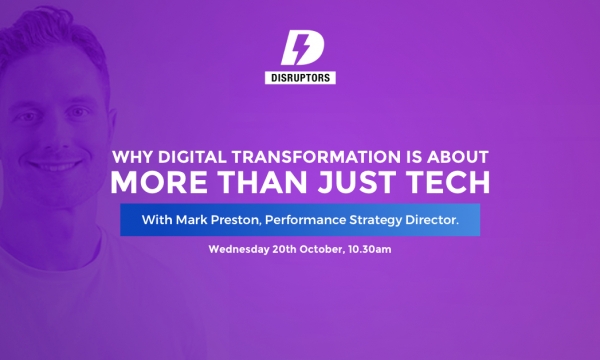
In the aftermath of the 2014 Consumer Finance Intelligence Report, we wrote about the threats that so-called “disruptor” brands posed to traditional High Street banking brands.
At the time, we explained how these brands had been caught out by the explosion of the price comparison website, with the big six (Money Supermarket, MoneySavingExpert, Compare the Market, Confused.com, Money.co.uk and GoCompare), combining for 82.75% of the total click share in the financial services market.
In the 2015 report, there is a much more positive picture for the retail banking brands. Whilst the price comparison services still hold a dominant position, their aggregated click share has fallen to just 62% of the market in 2015 – and the vast majority of which is commanded by the Money Supermarket Group (comprising of MoneySupermarket.com and MoneySavingExpert.com).
So what’s behind the fightback?

When we compiled our 2014 report, it wasn't a particularly positive time to be in retail banking. The reputational and public perception issues from the 2007 financial crisis were still being felt, consumer confidence was low and scandals such as PPI were growing in prominence. That led to many of brands taking a cautious approach to digital communications and, in many respects, left them with something of an identity crisis. In a market where all of the major brands generally looked the same, all sounded the same and did the same, not one was really standing out from the crowd.
The price comparison websites exploited this to the full. They exposed the differences between many of these brands, highlighted which products stood out from the crowd, and they created masses and masses of content that was not only incredibly engaging, but also extremely persuasive. In an industry that often relied on inertia, these comparison services slammed on the brakes. Consumers were now actively encourage to compare, switch and swap in a way that they never had done before.
Fast forward to 2015, and many banking brands are now much more confident at creating engaging content that highlights their key USPs. Where comparison websites would previously compare several largely identical products and compare them on price alone, the banking brands have now started to develop much more complex products that offer stronger consumer benefits, particularly in areas such as current accounts and credit cards.
Those new benefits have come about because of the way that comparison sites have changed customer behaviour when it comes to financial products. Now consumers are less likely to turn to their current supplier or a trusted brand and instead, seek a better deal or advice from a comparison website.
A new breed of disruptor brands, driven by content

This changed consumer behaviour has opened the door for other disruptor and fintech (financial technology) brands to enter the market.
Advice websites want to cover these challengers in the market, because it suits their agenda to save their audiences money, so these new brands, with their distinctive proposition, can earn masses of quality coverage very quickly. This helps them to build their brand and achieve stronger visibility in organic search.
Peer-to-peer lending is one such example of an industry that has grown in an age of price comparison and fintech innovation. Peer-to-peer (P2P) lending connects borrowers looking for a favourable loan rate with savers or investors looking for a greater return than they are currently getting from their current bank or building society.
Zopa is one such brand in this sector and, amid a backdrop of poor savings rates on the High Street and savers being encouraged to seek alternatives by the price comparison websites, it has been able to generate a foothold in the market.
Our 2015 analysis of the loans sub-vertical has demonstrated just how fragmented certain aspects of the financial services sector have become, with a number of relatively new brands entering the market.

The aggregated click share index reveals an extremely broad mix of brands, all vying for space within the loans market.
Paid is playing a big role in shaking up the market
Of all of the brands in our top ten aggregated visibility index for the loans market, only Clydesdale Bank has a physical presence on UK High Streets. The remainder of the list is made up of advice websites (Money Supermarket and MoneySavingExpert), high-interest lenders (118118money.com and little-loans.com), guarantor lenders (Amigo Loans), credit brokers (Freedom Finance), P2P lenders (Zopa) and supermarket-branded online banks (Tesco Bank and Sainsbury’s Bank).
A number of High Street banking brands do achieve organic visibility, with both Nationwide and Barclays present in the organic top ten, but these are pushed out of the aggregated listings by brands that are adopting a more aggressive paid search campaign.
It is a similar story in the savings sub-vertical, where paid activity is pushing of lesser-known and niche operators into prominent positions in the overall click share.
In the organic search market, we see a huge level of click share being commanded by the price comparison and money advice websites, with MoneySavingExpert, Money Supermarket, This is Money, Moneywise and Which all holding strong organic positions in this market.

However, only one of the banking brands featured in the organic top ten, Nationwide, makes the top ten aggregated index.
The paid market in the savings sector is clearly very competitive, and we see a diverse range of brands all looking to use paid as a way to secure visibility in the market. This includes fixed bonds providers (Castle Trust), Sharia-compliant banking providers (Al Rayan Bank), insurance providers (Aviva and Legal & General), property investment brokers (Harewood Associates) and mutual societies (Scottish Friendly).

It demonstrates that paid is possibly an area in which the more traditional brands are either choosing not to invest in, or struggling to gain any meaningful traction. Of course, click share is just one measure and alone, it is not enough to fully appraise the effectiveness of a paid marketing strategy, but it highlights that many niche brands are seizing an opportunity.
Whilst the banking brands are becoming much more savvy when it comes to producing content that their customer crave, it shouldn’t come at the expense of other, key marketing channels.



